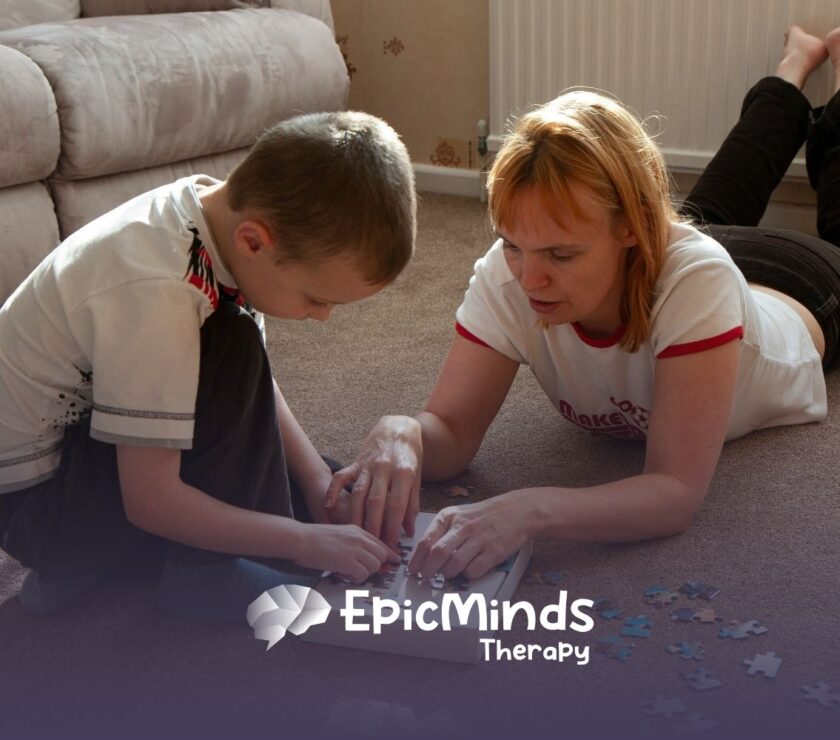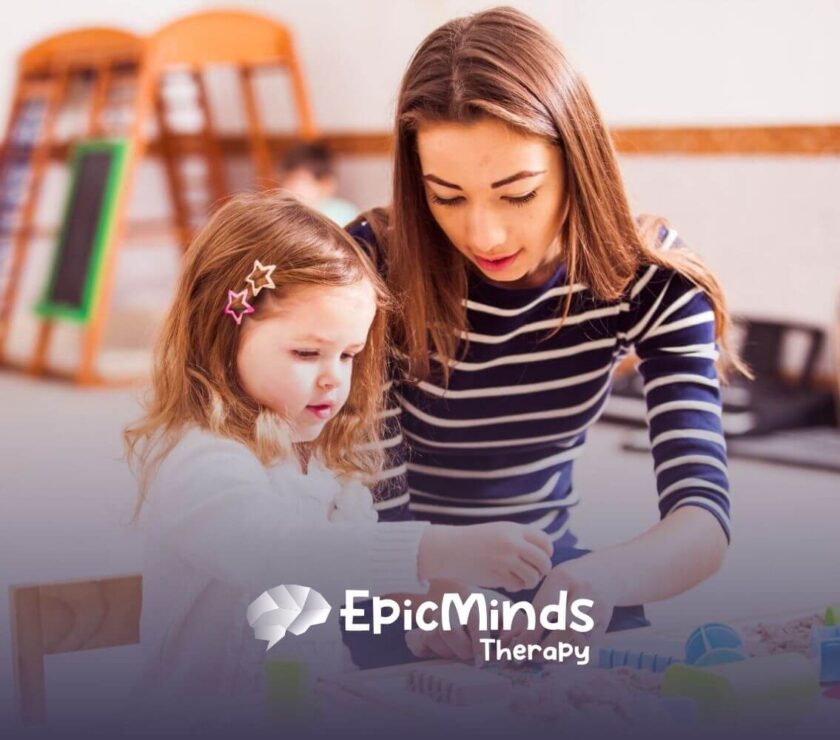Key Highlights
- ABA therapy sessions are tailored to each child’s unique needs, focusing on building essential life skills such as social interactions and functional communication skills.
- Certified behavior analysts plan therapy sessions using intervention strategies that promote positive behaviors while addressing challenging ones.
- Structured teaching methods like discrete trial training and natural environment teaching play a key role in skill development.
- Parent training sessions highlight family involvement to foster continuity of care and reinforce progress outside therapy.
- Detailed data collection helps monitor a child’s progress and make necessary adjustments for effective outcomes.
ABA therapy may look like play from the outside, but every part of a session is rooted in data, structure, and child-specific goals. For families, understanding what goes into a typical day helps build trust in the process.
I remember a session with a 6-year-old who loved dinosaurs. We used his interest to shape a matching game that taught him to follow multi-step instructions in in-home ABA therapy. He was so motivated, he didn’t even realize he was “doing therapy” — and that’s the magic of good ABA.
How the Day Begins: Setting Up for Success
Creating a Supportive Space
The day starts with setting up a space that’s safe, welcoming, and familiar. This might mean organizing toys, visual aids, or sensory tools before the child arrives.
In one of my past sessions, I had a client who thrived when we placed her favorite color-coded picture cards within arm’s reach. That small change made her feel more in control — and more eager to participate.
Preparing for the Child’s Unique Goals
Before each session, therapists review the child’s treatment plan. Goals are often based on assessments done by Board Certified Behavior Analysts (BCBAs) — things like improving eye contact, requesting items verbally, or brushing teeth independently.
According to Autism Speaks, early ABA therapy can lead to significant improvements in communication, learning, and behavior when applied consistently (Autism Speaks, 2023).
Personalized Plans: No Two Sessions Are the Same
Adapting to Strengths and Challenges
Each child’s plan is tailored to their strengths, needs, and what motivates them. For example, one child may love puzzles, while another prefers dancing to songs. We build learning activities around those interests to keep them engaged.
Tracking What Works (And What Doesn’t)
Progress is measured using data collected during each session. We may use frequency counts (how often a behavior happens), ABC data (Antecedent, Behavior, Consequence), and skill acquisition graphs to track improvements.
“ABA is not one-size-fits-all. It’s a science of learning that should be personalized and flexible,” says Dr. Mary Barbera, a BCBA and author of The Verbal Behavior Approach.
What Happens During a Typical ABA Session?
Building Trust Through Routine
Therapists begin by greeting the child warmly — sometimes with a preferred song, a smile, or a simple “high five.” Creating trust is key to engagement.
From there, sessions may include:
- Skill-building tasks (e.g., requesting, identifying colors)
- Play-based learning
- Sensory breaks
- Snack time with embedded teaching moments
Sessions range from 1 to 3 hours and can take place at home, in clinics, or at school.
Core Teaching Strategies in ABA
Discrete Trial Training (DTT)
DTT breaks skills into small steps. A therapist gives a clear instruction (e.g., “Point to the apple”), the child responds, and the therapist provides reinforcement like praise or a small reward.
This method is especially effective for early learners who benefit from structure and repetition.
In one case, I worked with a child who struggled to follow one-step instructions. Over time, using DTT, she progressed to following multi-step directions — a milestone her parents had been hoping for.
Natural Environment Teaching (NET)
NET takes learning out of the chair and into real-life situations. During free play, a therapist might prompt a child to ask for a toy, wait their turn, or name an object.
According to the Behavior Analyst Certification Board, embedding learning in everyday routines helps children generalize skills to new environments.
NET often feels like play — but it’s purposeful, targeted, and backed by data.
Family Involvement: A Key to Long-Term Success
Parent Training
Therapists often meet with families to teach them strategies they can use at home — like using praise effectively or handling challenging behaviors calmly.
A mom once told me that using the same prompting technique we practiced in therapy helped her child finally brush his teeth without a meltdown. That consistency made a huge difference.
Daily Communication
Therapists share daily updates on what went well and where challenges came up. Parents are encouraged to ask questions and share feedback.
This kind of teamwork ensures the child’s goals are supported across all parts of their life — not just during therapy.
How Progress is Tracked in ABA Therapy
Types of Data Collected
| Data Type | Purpose |
| Frequency Counts | Tracks how often a behavior occurs |
| ABC Data | Identifies triggers and results of behaviors |
| Skill Acquisition Graphs | Measures growth toward therapy goals |
Therapists analyze this data regularly with the BCBA to make sure the treatment plan is still effective. If a child isn’t making progress, goals are revised to better support them.
Final Thoughts: What to Expect and How to Prepare
ABA therapy is structured but flexible. It focuses on real-life growth — things like talking with friends, asking for help, or using the bathroom independently.
A successful day in ABA doesn’t mean perfection. It means progress, no matter how small.
As a therapist, some of my favorite moments weren’t the “big wins,” but the little ones — like the first time a child made eye contact or said “bye” at the end of the session.
If you’re wondering what ABA could look like for your child, the best first step is to speak with a qualified provider. A free consultation can help you understand what’s possible.
If you’re looking for personalized, evidence-based ABA therapy in North Carolina, Epic Minds Therapy is here for you. Our dedicated team of Board Certified Behavior Analysts and therapists work closely with families to help children grow, learn, and thrive — one step at a time.
Ready to take the next step?
Schedule your free consultation today and discover how we can support your child’s journey.
Frequently Asked Questions
How long is a typical ABA therapy session?
Sessions usually last between 1 to 3 hours, depending on the child’s needs and goals. They may take place at home, in a clinic, or school setting.
What skills does ABA therapy target?
ABA therapy helps with communication, social interaction, daily routines, and managing behaviors. Goals are always personalized.
How is progress measured?
Therapists use data like behavior frequency, skill tracking charts, and ABC analysis to monitor change and update plans.
Can parents be involved in sessions?
Absolutely. Parent training is a central part of ABA. The more consistent the environment, the better the results.
What happens during the first few sessions?
The first sessions usually involve assessments, observation, and building rapport with the child. From there, a treatment plan is created with clear goals.
Sources:
- https://pubmed.ncbi.nlm.nih.gov/38917993/
- https://www.autismspeaks.org/expert-opinion/what-discrete-trial-training
- https://www.autismspeaks.org/applied-behavior-analysis
- https://pmc.ncbi.nlm.nih.gov/articles/PMC9744984/
- https://online.regiscollege.edu/blog/aba-therapy-examples/




